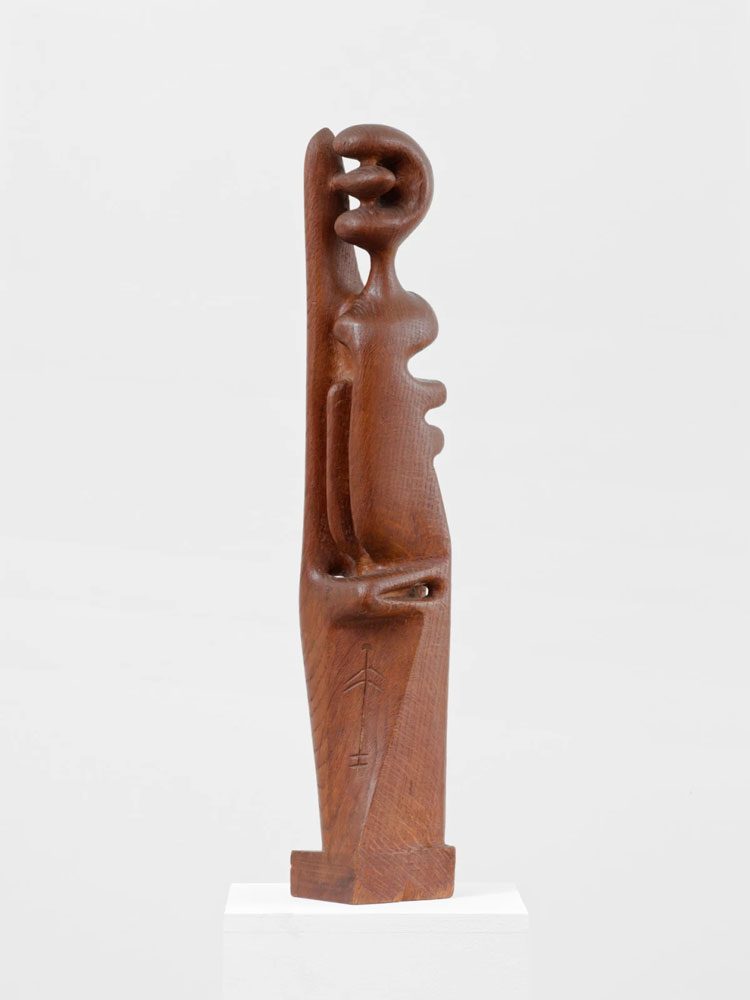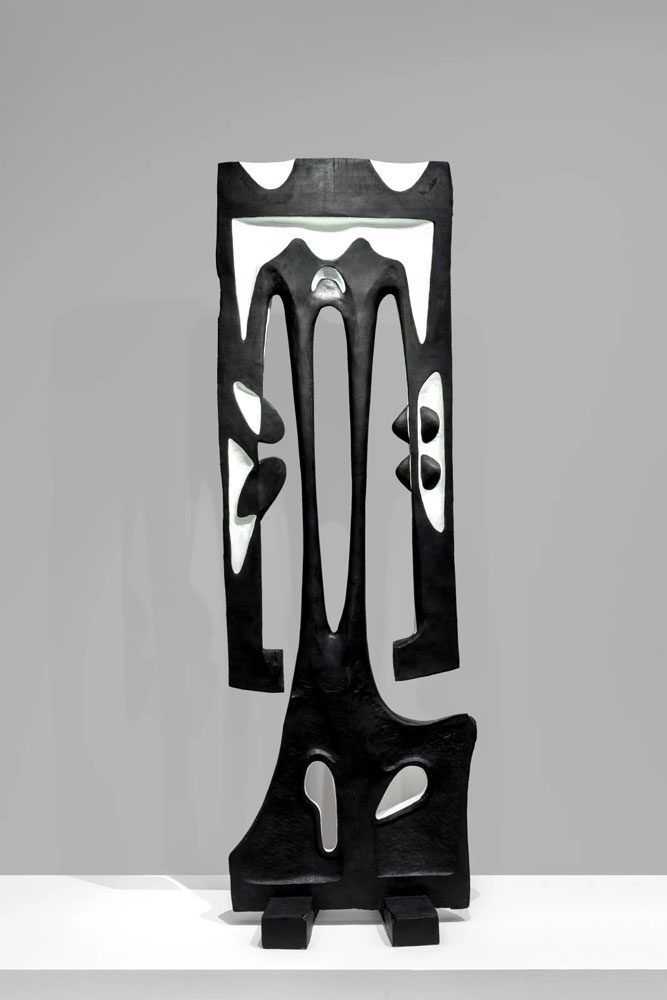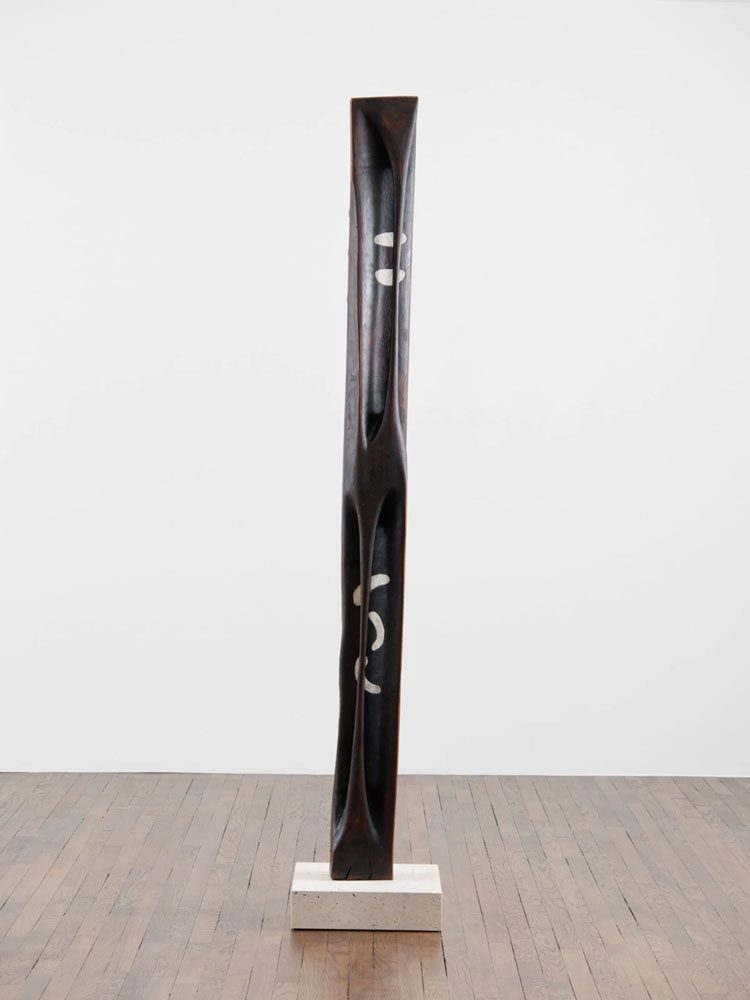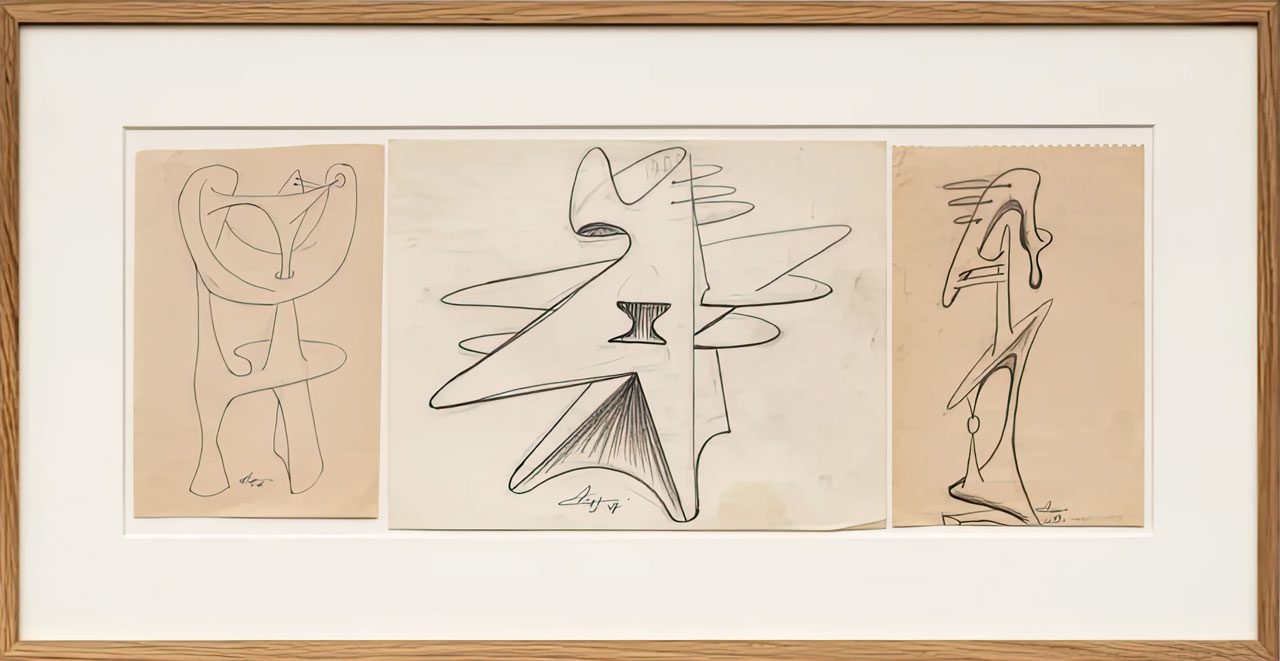ART CITIES:Paris-Agustín Cárdenas
Agustín Cárdenas is one of the three great sculptors of Surrealism, alongside Arp and Giacometti . While his work embodies his Latin-American and African origins, its strong symbolism and extreme liberty frees it from their respective references. Working with wood, marble, and bronze, Cárdenas developed poetic, curved, and sensual works in which organic generosity, elongated silhouettes, and abstract forms all mix together.
By Efi Michalarou
Photo: Galerie Mitterrand Archive
The works presented In the exhibition “The Memory of the Future” bear witness to Cárdenas’s stylistic and material research from 1955, the year of his arrival in France. Establishing connections between African, Caribbean and European aesthetic influences, the work of Agustín Cárdenas is a wonderful example of the concept of créolité*, a thought developed by poet and philosopher Edouard Glissant, who shared a close friendship with the artist from the 1950s and would go on to write extensively on his work. Bringing together works from the 1950s, 1970s and 1980s, the exhibition aims to highlight Agustín Cárdenas’ distinctive role in the history of modern sculpture. African art, a key inspiration for the artist, was also a major source of influence for owned a collection of masks and totems. Agustín Cárdenas was born in Matanzas, Cuba in 1927 as a descendant of formerly enslaved people from Senegal and the Cong, he studied at the Academia de Bellas Artes de San Alejandro in Havana from 1943 to 1949. His first individual show was held at the Palacio de Bellas Artes in Havana in 1955, and that same year he traveled to Paris on a scholarship, and at the invitation of André Breton, he joined the Surrealist group in Paris. His encounter with West African culture through Pan-Africanist circles there transformed his work and provided inspiration for his dynamic, totemic sculptures that fall between abstraction and figuration. For Cárdenas, Surrealism offered artistic freedom and personal rediscovery. “In Paris , I discovered what a man is…what African culture is…what a Black man is”. The abstract nature of Agustín Cárdenas’ volumes is almost always counterbalanced by a figurative representation, which is suggested by his chosen titles. Totems, shells, women, couples, horses, doors, stele: Cárdenas worked with an array of highly symbolic subjects providing him with the pretext to explore many facets of creation across various forms. Cárdenas lived in Paris since 1955, and worked in Paris and Carrara, Italy. Under the auspices of the magazine Avance the First Exhibition of Modern Art was held in Havana. The magazine helped foment the changes in direction being taken by the visual arts in a context that Marinello defined as the “critical decade”. Since his days at the San Alejandro Academy, the “master of masters” of Cuban sculpture, Juan José Sicre, recognized in Cárdenas the vigor and creative imagination that accompanied him throughout his career, from his early work at the end of the 1940’s through the experience of “Los Once” to the mature, definitive work of his Parisian period. In 1995 he was awarded the National Fine Arts Award, along with another outstanding Cuban sculptor, Rita Longa. He worked wood, marble and bronze with the same ease and sureness and with a poetic freshness that demonstrated that traditional media are not at odds with each other. He was comfortable dialoging ideologically with Brancusi or Henry Moore, with all the vitality afforded by an island whose sense of itself derives from its creative involvement in the linguistic codes of contemporaneity. Cárdenas’ impeccably finished, imaginative and truly poetic work has a parallel in painting in the work of another great Cuban artist, Wifredo Lam. Agustín Cárdenas’ farewell leaves a void, as each great artist does, but the compensation is his universal legacy, in which he was able to capture, in the words of Ricardo Pau-Llosa, “the apprehension of those intangible forces that give life form.” Cárdenas spent the last few years of his life in Havana, where he died in 2001.
*Créolité is a literary movement advocating for the defense of the cultural and spiritual values specific to the Creoles of the French Antilles. (Writers Raphaël Confiant and Patrick Chamoiseau are its main representatives.)
Photo: Agustín Cárdenas, Sans titre (Totem), 1956-1958, BIC pen and pencil on paper, 69 × 36 cm, © Estate of Agustín Cárdenas. Courtesy of Mitterrand, Paris. Photo: Aurélien Mole
Info: Galerie Mitterrand, 9 rue du Temple, Paris, France & Galerie Mitterrand, 95 rue du Faubourg Saint-Honoré, Paris, France, Duration: 1/4-29/5/2025, Days & Hours: Tue-Sat 11:00-19:00, https://mitterrand.com/en/






